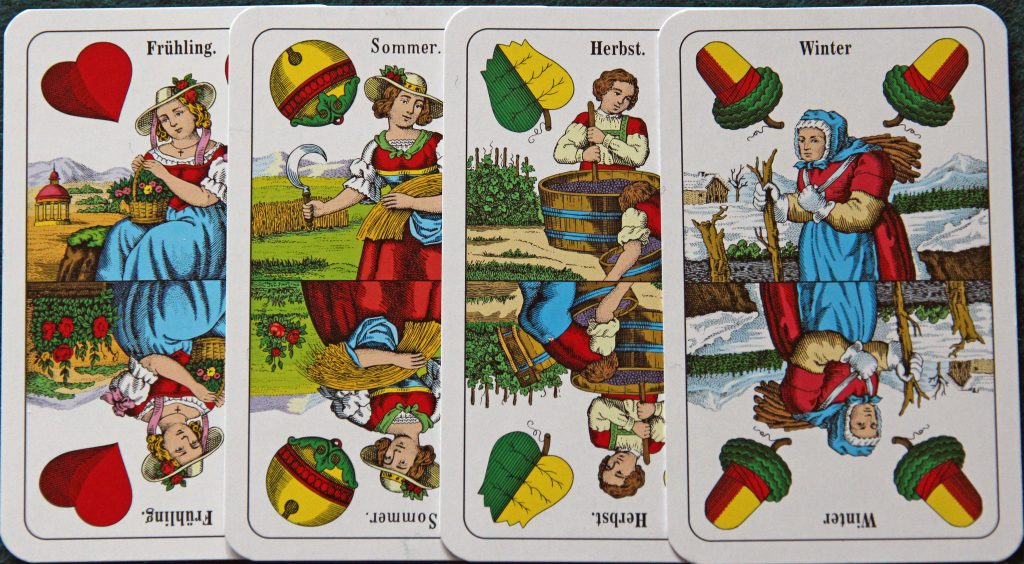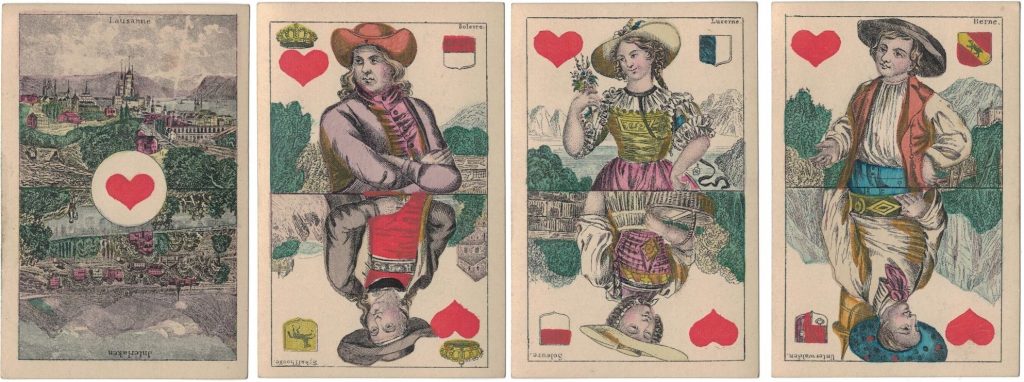The Origin of Playing Cards by V., a grade 8 student.

We are all familiar with playing cards, and consider it as a normal pass-time: it is an opportunity to relax, spend time with your family and friends and is a friendly competition between you and the other player or players. However, to the people of the past, a deck of cards was anything but normal!
A long time ago, in 1377, a German monk from Switzerland mentioned the idea of a deck of cards and games that could be played with them. So, the German monks made it happen: decks of cards were created all over Europe. Although, they did not have the same signs on them as they do today. The first European cards of the 14th century started off with signs of swords, clubs, cups and coins.
The first cards in Italy were hand-painted and beautiful luxury items found only among the upper classes. As time passed, card-playing became more popular, decks of cards became easier to find and afford.
After some time, the Germans introduced new signs on their cards which reflected their interest in rural life: acorns, leaves, hearts, bells… In nearby Switzerland it was common to see a variation using flowers instead of leaves, and shields instead of hearts. The Germanic signs are still used in parts of Europe today and are indebted to this period of history!

